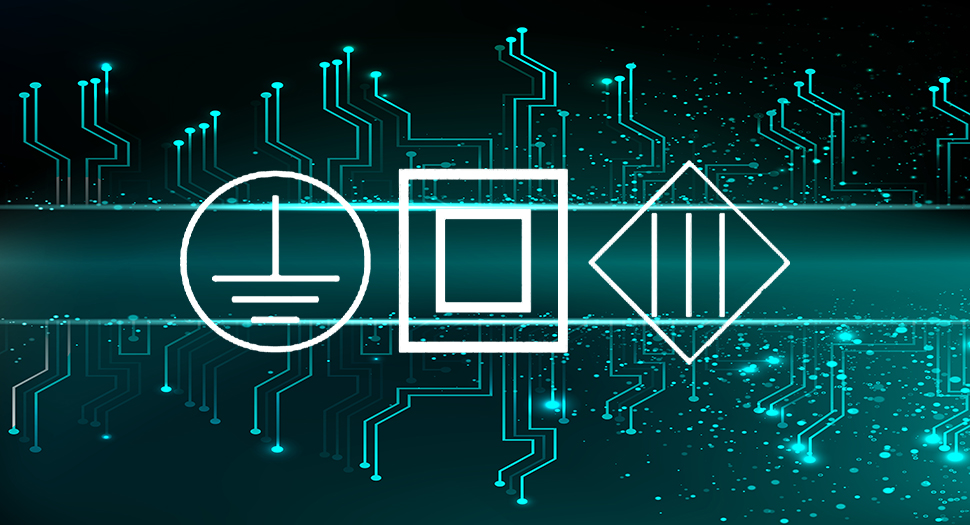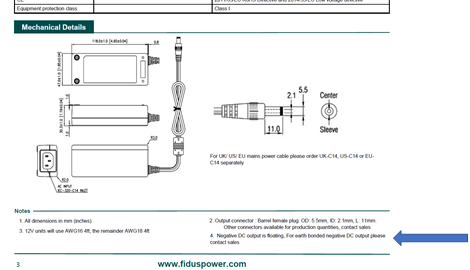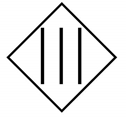Understanding IEC Appliance Insulation Classes: I, II and III
Protecting the user from harmful levels of energy is traditionally done though insulating the live components sufficiently. How this is achieved and to what level will dictate what class of insulation the unit will have. Below we cover in detail types of insulation and the three different classes of equipment.There are five categories of insulation used by the different classes of equipment; functional, basic, supplementary, double and reinforced:
- Functional insulation - basic level that is required for the supply to function. This does not prevent electric shock if touched.
- Basic insulation - provides the user a single and simple protection from electric shock.
- Supplementary insulation – like basic insulation, must withstand 1.5KVAC (2.1KVDC).
- Double insulation – the use of basic and supplementary isolation in conjunction to provide redundancy. If the basic fails, the supplementary still protects the user.
- Reinforced insulation – a single layer that performs in the same way as double insulation

Insulation can be in the form of creepage and clearance distances as opposed to an applied material or coating. Creepage is the distance measured over a surface, such as between two traces on a printed-wiring board or across the surface of an optoisolator. Clearance is the shortest distance through air (straight line), such as from the pin-to-pin of a connector. The creepage and clearance distances vary depending on the working voltage, pollution degree and the material group (“proof tracking index”) that you are measuring across. The lower the proof tracking index of a material group, the shorter the required creepage and clearance. These are outlined in detail in EN60950-1 tables 2K, 2L, 2M, 2N.

Class I Equipment
This class of equipment utilises a protective earth (PE) ground connection to offer a means of protection in the event of insulation failure. The insulation from hazardous energy levels is only of basic levels, e.g. the primary winding of a AC-DC SMPS. The protective earth connection is there to protect the user if the insulation breaks down and the earth (chassis) becomes live. If a short to earth occurs, either the fuse will blow or, if fitted, the RCD will trip because the supplied current is no longer equal to the return current on the neutral.
It is wrong to assume that when using a Class I power supply the -DC return has the same potential as AC GND. Class I power supplies can still have floating outputs, as such the -DC return is not directly connected to AC earth, but it is separated by a capacitor which will not offer PE to your powered device. If your end piece of equipment requires PE then please ensure that the power supply is configured such that this is possible, either by using the negative DC return that is connected directly to PE or via another conductor.
FiDUS POWER datasheets always stipulate if the output is floating or AC earth bonded in the note section below the mechanical drawing of the unit. If the standard configuration is not suitable please contact sales for the other variant.


Class II Equipment
In Class II equipment protection is achieved with double or reinforced insulation rather than reliance on a PE and basic insulation, either because a reliable PE is not available or for other system-specific reasons. This insulation must withstand at least 3000VAC ensuring the chances of exposed parts becoming live are significantly reduced. One knock-on design impact of this approach is EMC. Without an earth connection, EMC filtering is a much more difficult task and should be tackled early in the project as it can dictate the physical layout of the equipment’s’ internal components. Some units are Class II but offer a Functional Ground (or FG) which is used for EMC purposes. Should there be no ground to connect to within the installation, we would recommend attaching any earthing points to a conductive plate underneath the power supply.
Class II insulation is not to be confused with the North American standard NEC (National Electrical Code) class 2 circuit. A class 2 circuit is the “limited power circuit” between the load and the isolated secondary circuit of a power source who’s rating is less than 100VA (or 5 times Vout if output voltage is lower than 20V).

Class III Equipment
This class uses a supply type known as a separated extra low voltage or SELV for short. It does not utilise an earth connection or require specific insulation other than functional. The unit must be supplied with no more than 60VDC or 42.4VAC for no longer than 200ms in normal operation. In single fault conditions the allowable limits are slightly higher at 71VAC and 120VDC for a maximum of 20ms. At these limits the circuit is considered to be safe and no harm will come as a result of direct contact.
